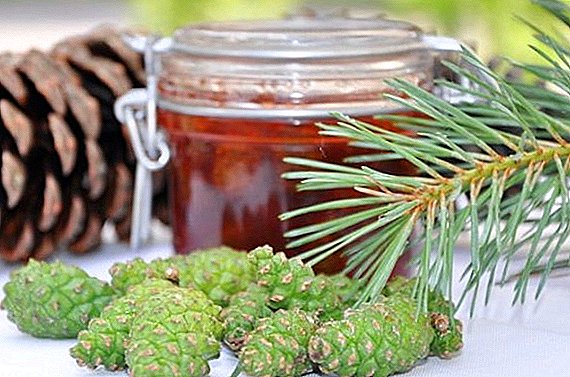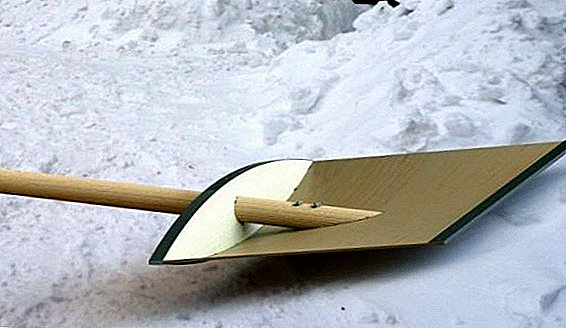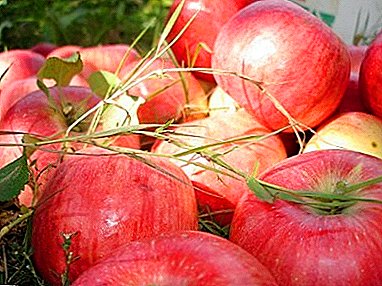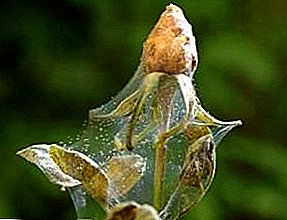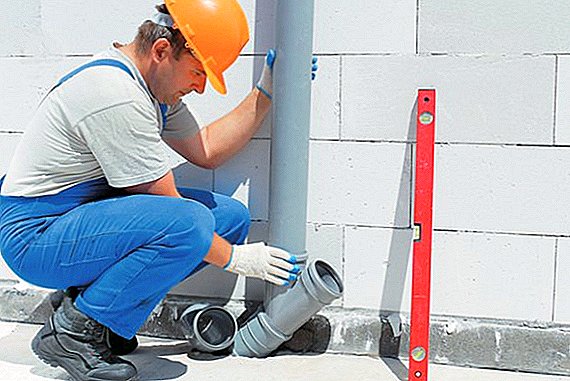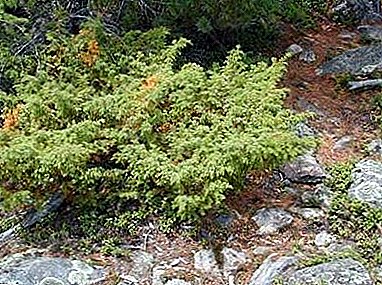
Siberian Cypress - spectacular, graceful evergreen.
In order to admire the beauty of this low shrub, it is not necessary to go on a dangerous journey through the forests of taiga, you can buy it in the store, surround it with care and care necessary for the plant.
Acquaintance
Siberian cypress, or Siberian juniper, can be found not only in the northern regions of our country, but also in the Far East, in the Caucasus, in the Crimea, in the northern part of Europe and America, as well as in central Asia.
It is a low shrub, usually not exceeding a height of 1 meter. Thanks to the evergreen soft and spreading crown is popular as an ornamental plant.
Care
 Nowadays, the care of dwarf coniferous bushes is carried out in an ordinary apartment, and this will surprise no one.
Nowadays, the care of dwarf coniferous bushes is carried out in an ordinary apartment, and this will surprise no one.
Although 10 years ago the cultivation of Siberian cypress on its window sill seemed unthinkable. Cypress unpretentious care. However, there are plant-friendly conditions, to create that does not make much work.
By nature, the shrub is a street plant, therefore needs regular fresh air intake. He does not like dryness and heat. In the summer, the plant is better to put in a cooler place. Do not forget to periodically spray the crown of the shrub, the plant will thank you with green luxurious needles.
Cypress needs a bright light, but at the same time direct sunlight must not be allowed on the shrub. During the heating season you can not put the plant in close proximity to the heater or room heating. Dry air can damage the plant.
Cypress feels comfortable at a temperature of from 5 to 15 degrees A lower temperature will not worsen the condition of the plant, but a high temperature and a dry indoor climate can be detrimental.
Watering The plant depends on its habitat. If the cypress grows indoors, then it should be watered more often than if the plant was on the street. During the winter in a cool place cypress is recommended to be watered once a week. It is important not to flood the plant with water, but watering should be regular. You can focus on the state of the soil in the pot, it should always be wet.
The soil for cypress, it is preferable to be slightly acidic with a pH level of 5.5 to 6.5. You can find and buy ready-made soil intended for junipers and cypresses.
Do not forget that cypress, like any plant, needs periodic feeding. The best time for this is a hot period of the year, which, depending on the region, occurs in late spring and summer. Ordinary mineral fertilizers work well as top dressing. But if you wish, you can find fertilizers on store shelves specifically for junipers and cypresses.
Cypress does not need frequent transplantationIt is recommended to do this no more than once every two years. When planting should not be too deepen the trunk of a bush. Prepare the soil in advance, making it loose and crumbly.
If you are thinking about breeding cypress at home, you should be prepared for the fact that this is not an easy thing. You can try to propagate the plant with pruning pruned cuttings. After cutting, the cuttings are rooted in a specially prepared room with a high level of humidity. For best results, you should use high-quality fertilizer and fertilizer.
Reproduction in natural habitat occurs in the second year of the plant. On the branches ripen the so-called cones. Each contains three seeds.
Regardless of the ability to reproduce, the “flowering” of the shrub occurs annually.
To shrub pleasing to the eye, should timely and properly cut dry branches. Remember that a dry branch is not partially cut, it should be removed completely. Depending on the desired result, the crown of the plant can be given any shape.
Pests and diseases
 For cypress is very important care. The most common disease for cypress is root rot.
For cypress is very important care. The most common disease for cypress is root rot.
This happens due to improper watering or inappropriate soil for the plant.
In order to save the plant, you need to remove it from the soil, cut off the diseased roots and transplant it into dry soil. After which you should make a more moderate irrigation system.
Of the pests for cypress most dangerous shield and spider mite. If you find yellow or brown hillocks on the leaves, then you are dealing with a shield.
The spider mite manifests itself, enveloping the branches of the plant with spider web. The plant slowly dries and falls.
Benefit
Cypress will add not only the interior of your home comfort and beauty, but also make indoor air cleaner and healthier. This plant is even recommended for people prone to diseases of the respiratory system.
Moreover, cypress is able to render disinfectant effect for some viral diseases, including tubercle bacillus or staphylococcus bacterium.
Essential oilssecreted by the plant, can charitable influence on the human nervous system. In folk medicine, juniper is used in the treatment of various diseases, including respiratory diseases, rheumatism and to improve overall health.
Cypress is useful not only for human health, this plant is widely used for production purposes.
Conclusion
Grow and care for house plants is not as easy as it may seem to an outsider. To enjoy your own garden is not enough to spend some personal time.
The plant is a living organism, needing care, careful handling and comfortable living conditions.


